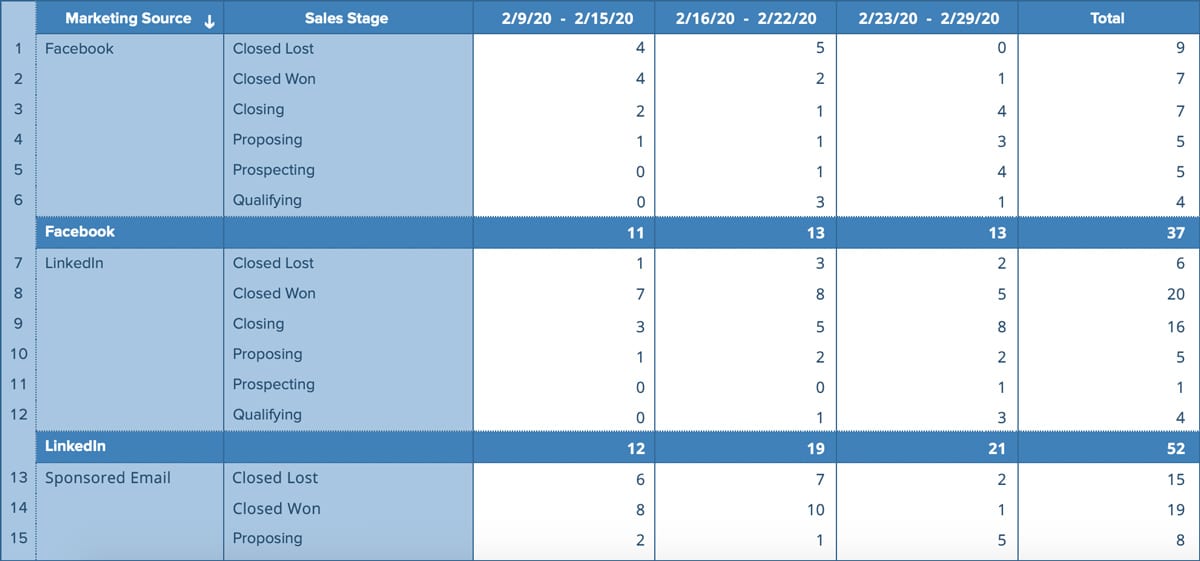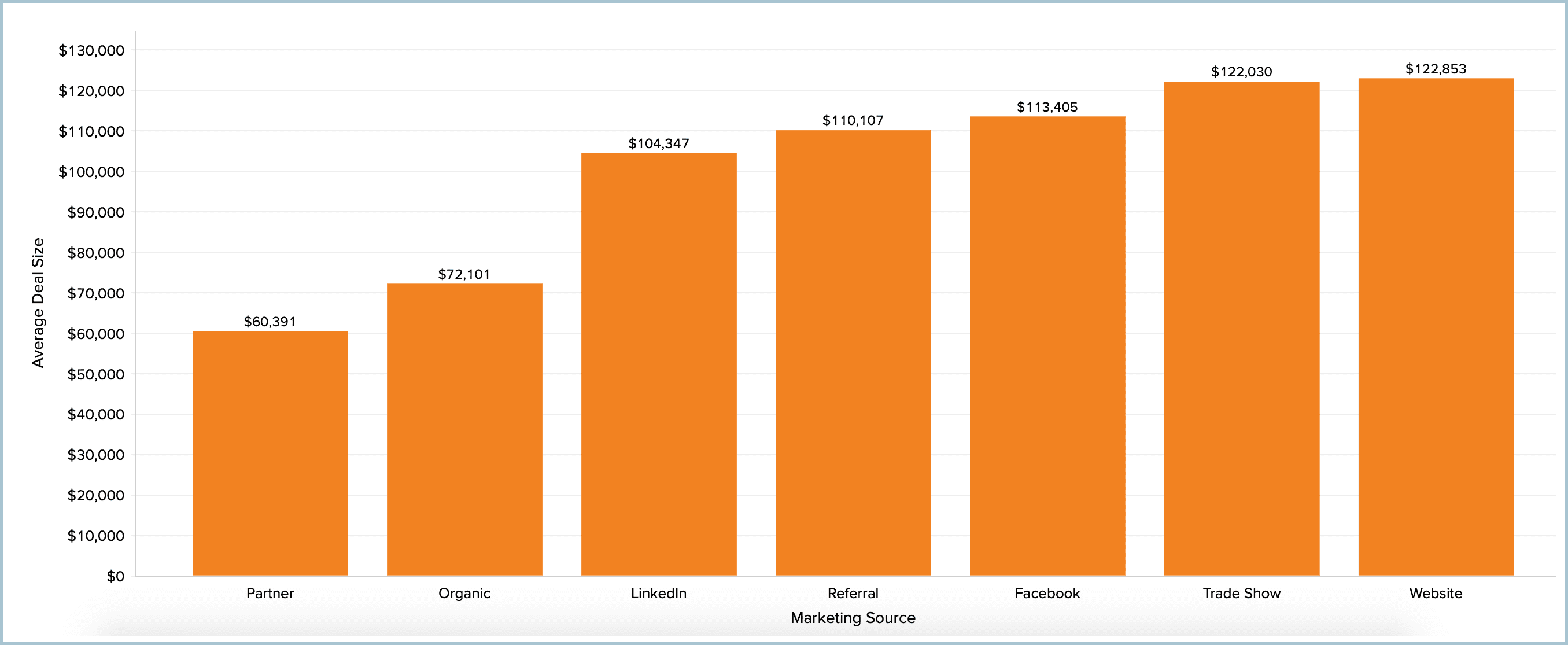Building a Data-Driven Marketing Program

Now more than ever before, modern marketers are accessing data to demonstrate the value of their awareness and demand generation programs. In fact, 64% percent of marketing executives “strongly agree” that data-driven marketing is crucial to success in a hypercompetitive global economy. Going before the board or the executive team is a normal part of the marketing leader’s responsibility and in doing so, they must be able to show ROI, momentum, lessons learned and comprehension of what’s working and what’s not.
Here are 5 ways that marketing leaders are leveraging marketing and sales data from Spiro to streamline efforts and improve overall results:
1) Create more revealing reports
It’s easy to go beyond the standard marketing reports that show leads generated, website traffic, email campaign results and more. With Spiro’s analytics capabilities, you can correlate marketing and sales data to provide a more holistic view into pipeline creation and revenue generation efforts.

When you integrate Spiro and your marketing automation platform, you can build insightful reports showing:
- Average deal size per campaign
- Average sales cycle per marketing source
- Number of touch points required to progress MQLs (marketing-qualified leads)
- Marketing-generated pipeline created and closed each month
- ROI of marketing campaigns
2) Monitor results in real time
A successful marketing campaign not only requires creativity and emotional connection, it also requires demonstrable results such as clicks, conversions and action. Proving successful results based on data rather than hearsay or opinions is paramount to obtaining credibility and trust across the organization. Numbers and results don’t lie — they are standard, they show trends and they are more predictable.

Further, understanding what’s working in real-time can be a huge advantage. By monitoring a campaign’s results day-to-day, week-over-week, you can closely track responses, leads generated, leads converted to contacts and number of contacts converted to customers.
3) Pivot when something isn’t working
Tracking the effects of a particular marketing campaign beyond an initial response and into the actual sales pipeline is critical for being able to repeat any success you have. It’s also helpful to see what’s NOT working, quickly. Marketing programs may look successful at first glance but when you connect the data to the sales funnel, you can truly understand if the quality of the leads generated are what the sales team needs – including meeting your ideal customer profile to being a decision-maker with a project and budget in place.
Closed-loop reporting between sales and marketing enables you to become more agile, allowing you to change course and fine-tune your campaigns to reach better results. A comprehensive view into campaign results helps to ensure you’re not wasting more time, energy and budget on something that’s not bringing the expected results.
4) Identify your key performance indicators
Once you know what can move the needle for your marketing efforts to help drive sales, you can start to standardize on the KPIs (key performance indicators) that are most critical and relevant to the goals you’re working to achieve. Then, once you’ve gained agreement on the most critical KPIs, you can create reports to help you actively monitor progress towards reaching those goals. For example, you may notice the sales cycles of certain types of leads are shorter and ultimately, decide to focus on bringing in more of those.
5) Look toward predictive analytics to target more of your best marketing leads

When you are able to identify your best customers — whether you qualify those based on having the fastest conversion rates or the largest deal sizes — you’re able to repeat the process you went through to acquire those customers. What campaigns did they respond to? How many touch points were required? What were the areas of interest that prompted them to take action? Once you understand those data points, you can finely tune your next marketing campaign or program to attract similar prospects.
Are you ready to build a data-driven marketing machine?
Transparency breeds trust. That’s why having access to data-driven reports and analytical dashboards are critical to building a data-driven marketing program that the entire company supports.
The good news: companies today are swimming in data. The not so good news: not every company can easily access or pull its data and thus, is unable to act with the necessary agility today’s market requires. That’s where Spiro’s proactive relationship management platform can help. Because Spiro collects up to 16 times more data than a legacy CRM system and includes powerful analytics capabilities, you gain full visibility into the impact your marketing programs are having on pipeline generation, influence and closing.
When you can fully understand the ROI of your marketing campaigns, as well as uncover more granular trends and successes, you can build a data-driven marketing program that is predictable and scalable.
Request a demo today and see how Spiro is able to give you the visibility into what’s working and what’s not for your marketing efforts.

